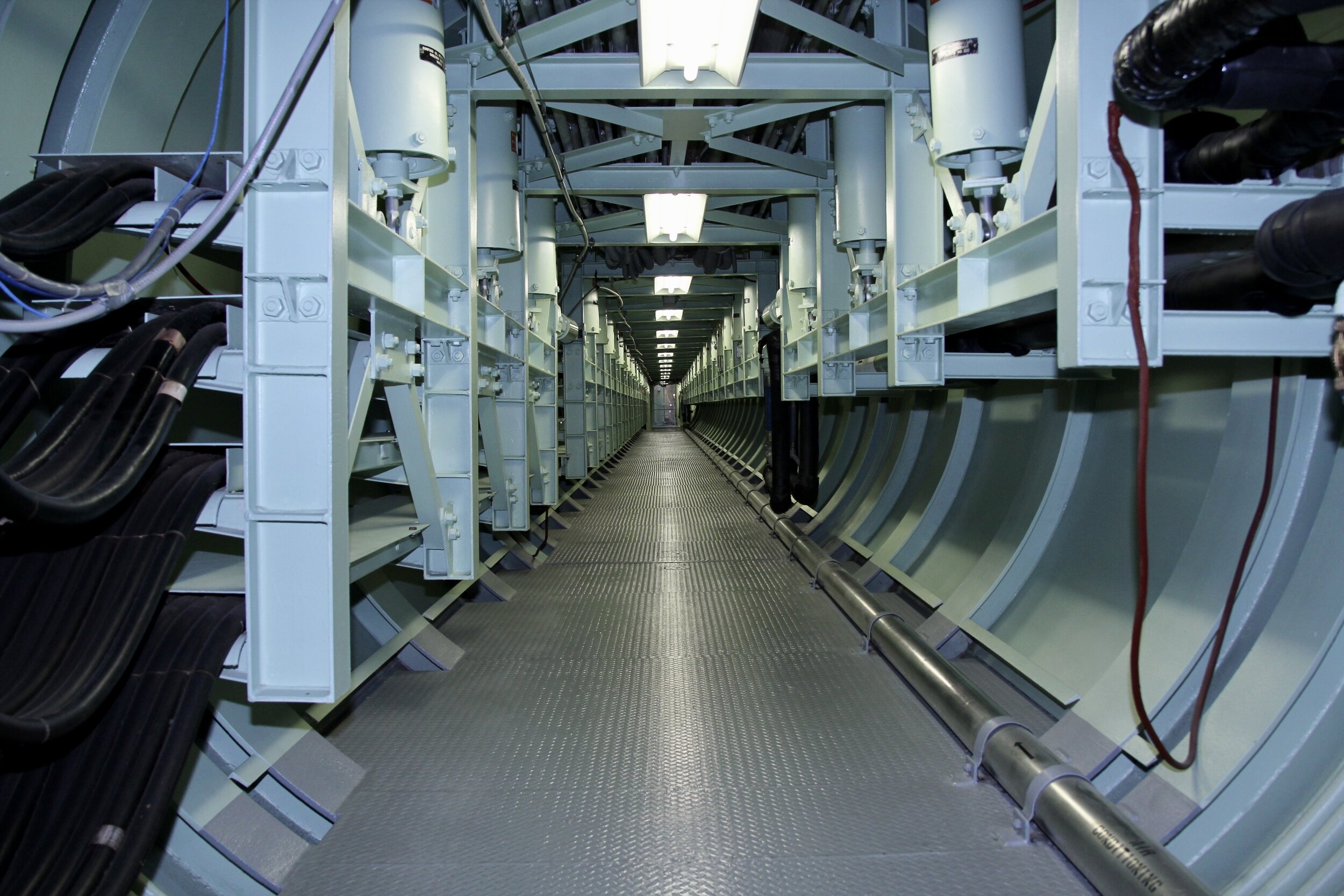
Titan Missile Museum, Sahuarita, AZ
(Photo: Titan Missile Museum)
A true relic of the Cold War is located near the United States’ southern border and is open for public tours. Located in Sahuarita, AZ, the Titan Missile Museum encompasses a remarkably well preserved Titan II ICBM complex including topside as well as underground facilities.
Formerly known as launch complex 571-7, the Titan Missile Museum is one of a kind. Of the original 54 Titan II complexes located in Arizona, Arkansas and Kansas, only this one escaped demolition when the Titan II fleet was phased out in the 1980s. Chuck Penson, archivist and historian for the Museum, was kind enough to give me a top to bottom tour of the facility and I couldn't imagine a more knowledgeable guide. I won’t go deeply into the history or performance specs of the Titan II system but if you want to learn about those things, I strongly suggest you get Chuck’s excellent book, The Titan II Handbook. His book is well organized and well written….one particularly welcome feature is the generous number of photographs that nicely complement the text.
Ingress and egress
The underground Launch Control Center is entered via elevator or stairway at the Access Portal. After a 35 foot descent, a 7,000 pound blast door is the main entrance to the underground complex and provides access to the launch control center, crew quarters, various equipment areas as well as the missile silo. If the Access Portal were to be destroyed, an emergency escape hatch, in theory, allows crew members to escape through a ten foot long tunnel that leads to the surface via a ladder in an air shaft.
Sign, sign, everywhere a sign
In a world where almost everything comes with its own warning label, it’s easy to become complacent and inattentive to real danger. A Titan II ICBM complex is a place that legitimately needs warning signs and they appear as soon as you approach the main gate. Some of them are as applicable today as they were when the facility was actively deterring enemy attack. The missile, for example, is surrounded in its concrete silo by elevated and retractable work platforms and, wisely, there is a large warning tag.
The stencil in the crew’s sleeping quarters warns against smoking in bed and actually cites the regulation you would be violating if you lit one up. Sensible then and now, right? Other than the obvious hazard of setting your mattress on fire, common sense says that you shouldn’t play with fire when there are 31,000 gallons of rocket fuel and oxidizer just down the corridor inside the aluminum skinned Titan II.
I should point out that the United States still maintains a sizable, land-based nuclear deterrent in the form of 400 Minuteman III ICBMs. The Minuteman III carries a very accurate, single warhead in the 300 kiloton range (roughly 20 times the yield of the bomb dropped on Hiroshima) as opposed to Titan II which had an impressive (albeit less accurate) 9 megaton payload. Minuteman combat crews and Titan II combat crews have/had very different relationships with their nuclear weaponry. A Minuteman combat crew is stationed in an underground Launch Control Center (LCC) where they command a flight of ten Minuteman III missiles dispersed and located many miles away in underground silos hardened against nuclear blast. A Titan II combat crew was also underground but had a more intimate bond with their single missile because they basically lived with it….they monitored it….they maintained it….they slept "down the hall" from it.
Go to war
Two keys were required to launch a Titan II missile and both were kept in the double-locked (and very red) Emergency War Orders safe (sometimes referred to as the “go to war” safe). Only the Missile Combat Crew Commander and the Deputy Missile Combat Crew Commander could initiate a launch and both crew members had unique keys to each of their safe padlocks. The actual “ignition” switches were activated by the launch keys and were sufficiently far apart to prevent activation by one person.
The vertical shaft that surrounds the Titan II is referred to as the launch duct and it allowed maintainers to access the missile from a series of retractable work platforms located at various levels from top to bottom. At the very bottom of the launch duct is a massive concrete wedge called the flame deflector that diverts rocket exhaust through two ducts that are shafted to the surface. Videos of a Titan II silo launch keenly illustrate the twin plumes shooting out of those exhaust shafts.
Titan II Silo launch
Note exhaust plumes emerging from the exhaust shafts.
Site ruins






